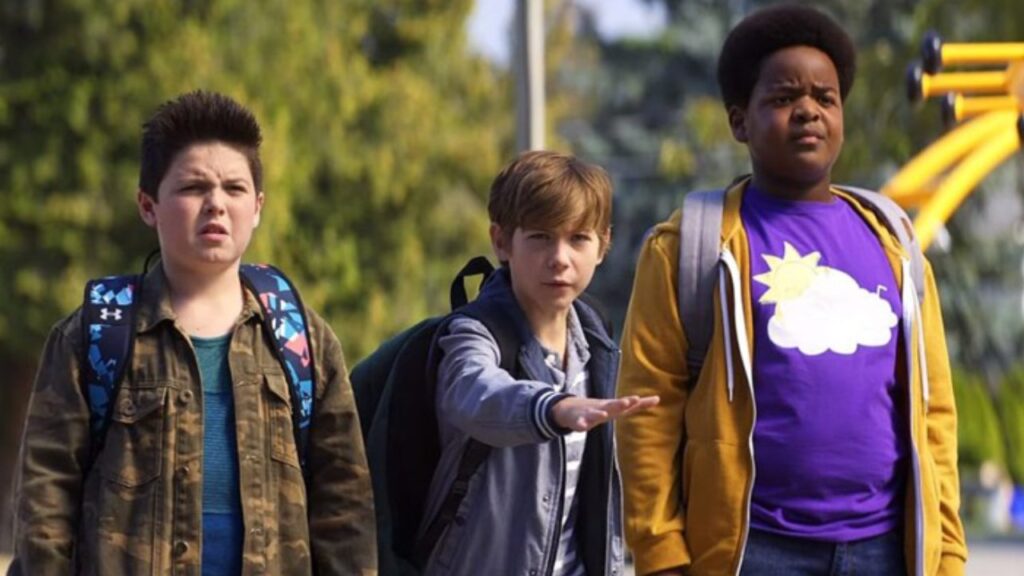
The entertainment industry often pushes boundaries, exploring complex and sometimes controversial themes. This raises questions about the involvement of child actors in films rated R, which are generally considered unsuitable for minors due to their mature content. Determining whether can children act in R-rated movies is a multifaceted issue with significant legal and ethical implications.
This article delves into the complexities surrounding child actors in R-rated movies, examining the legal regulations, industry guidelines, parental consent processes, and ethical considerations that shape this controversial topic. We will explore the various factors influencing these decisions and analyze the delicate balance between artistic expression and the protection of young performers.
Child Actors in R-Rated Movies
The presence of child actors in R-rated movies can be jarring for audiences accustomed to age-appropriate content. These films often deal with sensitive subjects like violence, sexuality, drug use, and strong language, which may be unsuitable for children’s comprehension and emotional development.
However, there are instances where child actors contribute significantly to the narrative of an R-rated film. They might portray characters grappling with complex issues, adding a layer of realism and emotional depth to the story. In some cases, their presence can serve as a commentary on societal norms or highlight the impact of mature themes on younger generations.
Despite these potential artistic merits, the inclusion of child actors in R-rated movies remains a subject of debate. Critics argue that it exposes children to potentially harmful content and risks normalizing inappropriate behavior. They emphasize the importance of protecting children from undue influence and ensuring their well-being is prioritized over artistic expression.
Legal Regulations and Restrictions

While there are no federal laws explicitly prohibiting child actors from appearing in R-rated movies, state regulations and local ordinances often impose restrictions on minors’ involvement in content deemed inappropriate for their age group.
Many states have enacted “child labor” laws that regulate the working hours, conditions, and types of roles children can perform in film productions. These laws aim to protect children from exploitation and ensure they receive adequate education and rest. Some states may also require parental consent or court approval for minors to participate in films with mature themes or potentially harmful content.
Furthermore, industry organizations like the Screen Actors Guild (SAG-AFTRA) have established guidelines and safety protocols for working with child actors, which often include restrictions on their involvement in R-rated productions. These guidelines aim to minimize potential risks and ensure the well-being of young performers.
Industry Guidelines and Safety Protocols
Production studios typically adhere to strict safety protocols when casting and working with child actors, regardless of the film’s rating. These protocols are designed to protect children from harm and create a safe and supportive work environment.
Some common industry guidelines include:
- Age-appropriate roles: Casting directors strive to match child actors with roles that align with their age and maturity level.
- On-set supervision: Dedicated adult supervisors are assigned to monitor child actors throughout filming, ensuring their well-being and adherence to safety protocols.
- Limited working hours: Child labor laws often restrict the number of hours children can work each day and week.
Production companies may also implement additional measures like providing on-set childcare, educational resources, and psychological support for child actors.
Parental Consent and Ethical Considerations

Parental consent is crucial when it comes to child actors participating in any film production, especially those with mature themes or potentially sensitive content. Parents have the right to make informed decisions about their children’s involvement in entertainment and ensure their well-being is protected.
Ethical considerations surrounding can children act in R-rated movies extend beyond legal requirements. It involves a careful consideration of the potential impact on the child’s emotional development, social relationships, and future opportunities. Experts often emphasize the importance of open communication between parents, child actors, and production teams to ensure everyone is comfortable with the project and its potential implications.
Balancing Artistic Expression and Child Protection
The debate surrounding can children act in R-rated movies ultimately boils down to a delicate balance between artistic expression and child protection.
While filmmakers have the right to explore complex themes and push creative boundaries, it’s crucial to prioritize the well-being and safety of young performers. Finding this equilibrium requires careful consideration, open dialogue, and a commitment to ethical practices throughout the filmmaking process.
Conclusion
The involvement of child actors in R-rated movies presents a complex dilemma with legal, ethical, and artistic considerations. While there are no federal laws prohibiting it, state regulations, industry guidelines, and parental consent play crucial roles in shaping this decision-making process. Ultimately, finding the right balance between artistic expression and child protection requires careful consideration, open communication, and a commitment to ethical practices throughout the filmmaking journey.
